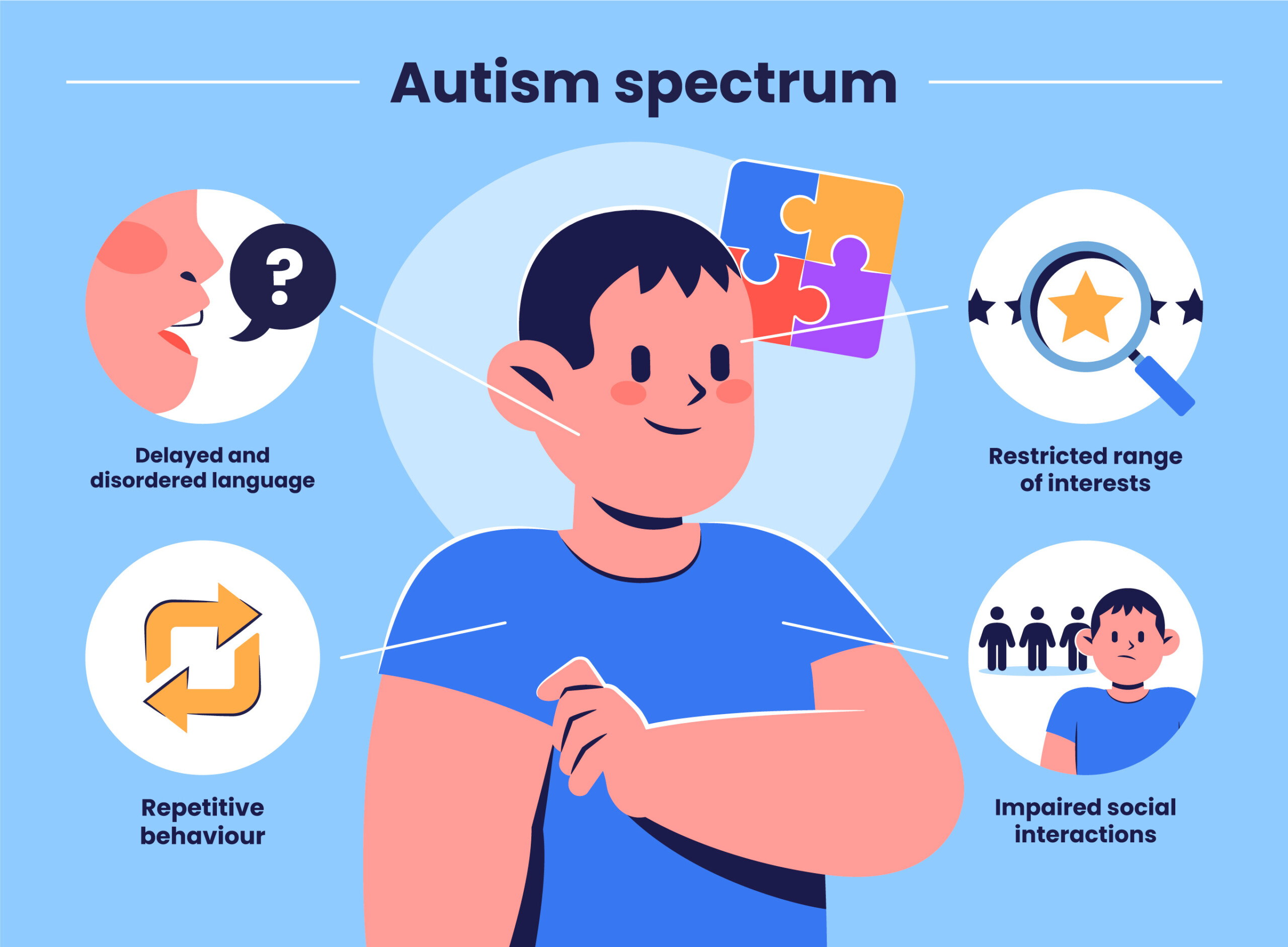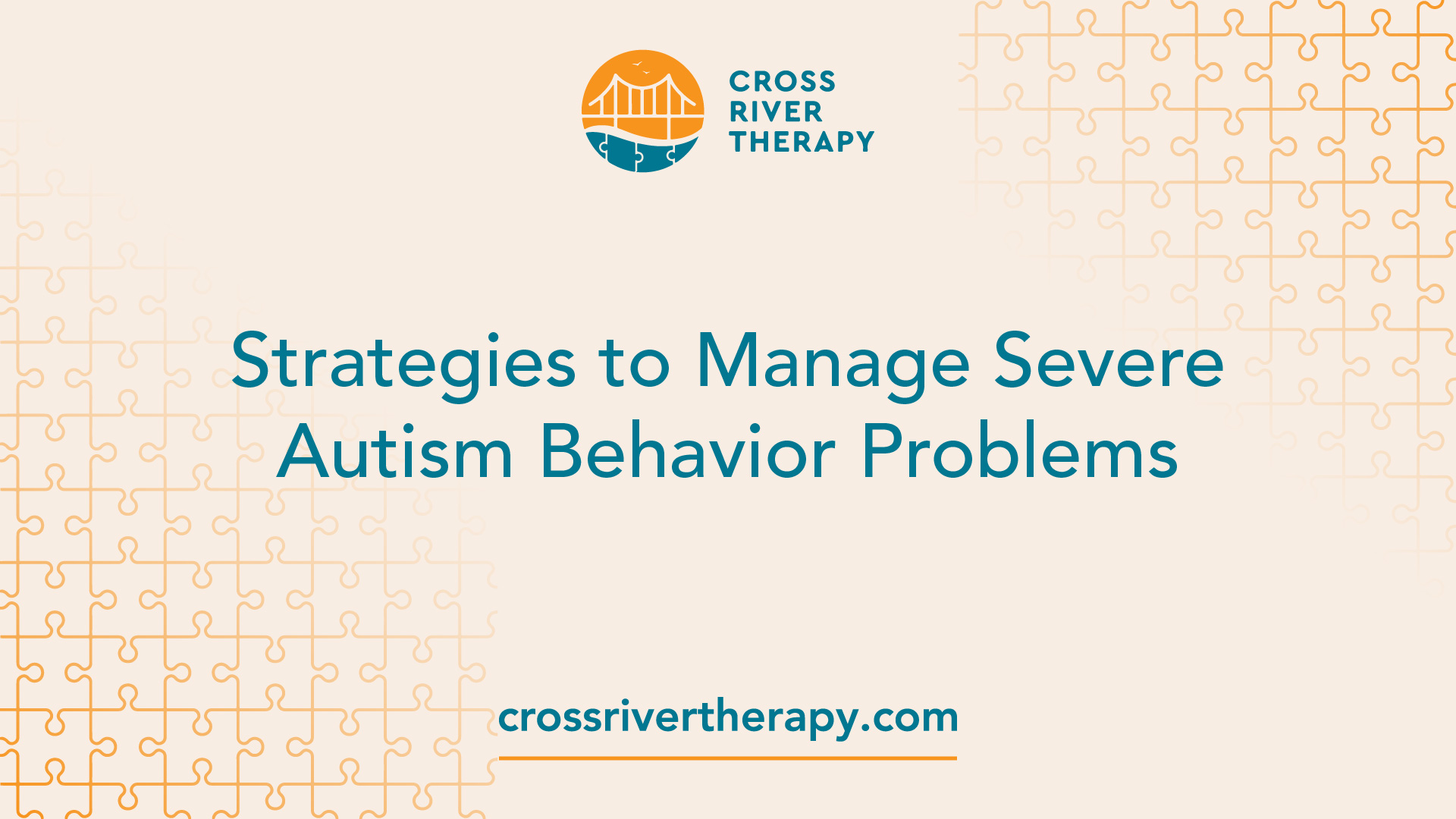Understanding the Effect of Behavioral Autism on Every Day Life and Social Interactions
You could not understand just how deeply behavior autism affects daily life and social interactions. Individuals on the spectrum typically browse a globe loaded with interaction obstacles and sensory overload. These obstacles can lead to disappointment and seclusion, influencing their connections and general well-being.
Specifying Behavior Autism and Its Characteristics
Behavioral autism, frequently referred to as autism spectrum problem (ASD), includes a range of conditions characterized by challenges in social communication, communication, and repetitive actions. You could see that people with ASD usually battle to analyze social signs, which can cause misconceptions in conversations. They may locate it tough to develop eye get in touch with or engage in tiny talk, making social scenarios feel overwhelming.
Communication troubles can manifest in numerous ways, from postponed speech development to a choice for using less words. By recognizing these attributes, you can promote an environment that promotes approval and motivates reliable communication, assisting individuals with autism grow in their daily communications.
The Range of Autism: Understanding Irregularity in Actions
Autism spectrum condition (ASD) isn't a one-size-fits-all medical diagnosis; it varies commonly amongst people. You may see that some people with ASD display moderate symptoms, while others may encounter extra considerable obstacles. This irregularity can manifest in habits, passions, and sensory level of sensitivities. You may run into people who are extremely verbal and engage quickly in discussions, while others could favor solitary tasks or connect non-verbally.
Additionally, the method individuals with ASD react to sensory input can vary greatly; some may be overwhelmed by bright lights or loud sounds, whereas others thrive in boosting settings. The range likewise includes differences in social communications; some people might struggle to translate social signs, while others browse social settings with loved one simplicity. Understanding this variability is essential, as it assists you value everyone's distinct experience and tailor assistance to their certain needs, cultivating a much more comprehensive setting for everyone.
Communication Difficulties Faced by People With Autism
When you connect with people on the autism spectrum, you might notice their one-of-a-kind interaction difficulties. They commonly deal with difficulties with both nonverbal and spoken hints, which can impact their social interactions. Recognizing these barriers is important for cultivating much better connections and assistance.

Verbal Communication Problems
Lots of people on the autism range experience spoken communication troubles that can considerably influence their daily interactions. You may discover it testing to express your ideas, feelings, or needs plainly. This can cause aggravation for both you and those around you, as misunderstandings happen. You might fight with initiating conversations, keeping a topic, or comprehending nuances in speech. Commonly, you may prefer making use of straightforward language or repeated expressions, which can limit your capability to participate in much deeper discussions. Your speed, quantity, or tone could not align with social expectations, creating others to misinterpret your intents. Identifying these obstacles can help you and your support network establish approaches to enhance interaction and cultivate better connections with others in your day-to-day live.
Nonverbal Interaction Barriers
Spoken communication isn't the only difficulty people on the autism range face; nonverbal interaction obstacles can be equally as considerable. You could discover it tough to interpret body language, faces, and eye get in touch with, which are necessary for reliable interaction. These difficulties can result in misunderstandings or false impressions of social signs, making communications feel overwhelming or confusing. You may battle to reveal your own feelings via nonverbal ways, leaving others unsure of your sensations or intentions. This separate can produce feelings of isolation and disappointment. Recognizing these obstacles is essential for fostering understanding and empathy in your interactions. By addressing nonverbal communication, you can find techniques to boost your social experiences and boost your general lifestyle.
Social Communication Influences
Social interactions can usually really feel frustrating because of the distinct interaction obstacles faced by people with autism. You may struggle with analyzing social hints, making it difficult to comprehend mockery or body language. This can cause misconceptions or awkward minutes in discussions. Additionally, initiating and preserving discussions might really feel challenging, causing anxiousness in social circumstances. You may like structured atmospheres, making spontaneous interactions unpleasant. It's likewise usual to experience problem in participating in tiny talk, which can hinder forming new friendships. Identifying these obstacles can aid you locate strategies to improve communication, such as exercising social abilities in secure settings or utilizing aesthetic help - Autism Therapist. Understanding your needs allows you to browse social communications with better self-confidence and convenience.
Social Interaction and Partnership Structure in Autism
While structure relationships can be testing for people with autism, recognizing their special viewpoints and communication designs can promote significant connections. You could notice that lots of people on the range favor straight interaction and may fight with social cues or little talk. By being simple in your communications, you can aid develop an atmosphere where they really feel comfy.
Take the time to listen and observe exactly how they share themselves. This insight can lead you in guiding conversations better. Engaging in shared rate of interests can likewise work as a bridge to deeper connections. Whether it's a pastime, a preferred show, or a shared passion, these usual threads can open up doors to friendship.
Day-to-day Live Routine: Browsing Obstacles and Techniques
Navigating day-to-day live routines can be especially challenging for people with autism, particularly when unanticipated adjustments occur. You may locate comfort in having a structured schedule, as it assists you expect what's following. It's normal to feel overwhelmed or nervous when interruptions occur. To browse these difficulties, consider implementing visual routines or checklists. These tools can provide clarity and reassurance.
Establishing a regimen that consists of sensory breaks can likewise be useful. This assists develop an understanding atmosphere.
Last but not click here least, technique mindfulness strategies to handle anxiety and anxiety. Straightforward breathing workouts or grounding strategies can make a substantial difference. By incorporating these approaches, you can improve your everyday regimen and lessen disturbances, making life feel extra workable.
Strengths and Capacities of People on the Autism Spectrum
Understanding life routines is simply one aspect of the autism experience. Several individuals on the autism spectrum have remarkable toughness and capabilities that establish them apart. You might locate that your attention to information is phenomenal, enabling you to master tasks that call for precision and emphasis. Your capability to believe outside the box can lead to innovative remedies in various scenarios.
Additionally, your memory abilities typically beam, especially in areas of rate of interest. Autism Therapist. This knack for keeping details can make you a valuable resource in fields like art, technology, or science. You might additionally show solid aesthetic reasoning, allowing you to imagine complex concepts and address problems creatively
Furthermore, your one-of-a-kind Autism Behavioral Therapy viewpoint on the world can cultivate empathy and understanding in others, enriching social communications. Accepting these staminas not only improves your confidence however also helps others appreciate the diverse abilities you offer the table.
Developing Comprehensive Settings for People With Autism
Producing inclusive environments for individuals with autism begins with making sensory-friendly spaces that cater to their unique needs. You can additionally cultivate chances for social communication, aiding to construct connections and friendships. By making these adjustments, you'll contribute to an extra inviting environment for everyone.
Creating Sensory-Friendly Spaces
While making sensory-friendly spaces, it's essential to review the distinct needs of people with autism. Begin by choosing relaxing colors and soft lighting to produce a calming setting. When overwhelmed, include peaceful areas where people can retreat and reenergize. You'll desire to decrease loud noises and interruptions, making use of soundproof materials or white noise makers to help maintain peace. Consider responsive elements like soft materials or fidget-friendly things that can offer convenience. Determine that rooms are flexible, enabling very easy rearrangement to fit various tasks. Consist of visual routines or clear signs to aid people browse the space confidently. By attentively incorporating these elements, you can produce a welcoming atmosphere that sustains read more sensory needs and promotes general health.
Advertising Social Communication Opportunities
Designing sensory-friendly spaces not only addresses specific convenience yet likewise establishes the stage for purposeful social communications amongst people with autism. To promote these interactions, produce comprehensive settings that invite involvement. Arrange structured tasks, like art classes or team video games, that motivate partnership without overwhelming sensory input. Use aesthetic aids and clear communication to help every person involve comfortably. Motivate peer mentoring, matching individuals with autism with helpful peers who can guide them through social situations. Furthermore, think about holding regular area occasions that celebrate neurodiversity, fostering approval and understanding amongst all individuals. By executing these techniques, you can enhance social possibilities, aiding individuals with autism build relationships and enhance their social skills in a secure, welcoming environment.

Regularly Asked Concerns
Just How Can Buddies Assistance Someone With Behavioral Autism?
You can sustain a buddy with behavior autism by being client, listening actively, and respecting their borders. Involve in tasks they enjoy, connect honestly, and create a comfortable atmosphere where they really feel valued and understood.
What Resources Are Offered for Moms And Dads of Kid With Autism?
You can check out different sources for parents of kids with autism, including support system, instructional websites, and local social work. Connecting with other parents can also provide important insights and shared experiences to help navigate obstacles.
Can Behavioral Autism Adjustment Gradually?

Yes, behavior autism can change with time. You might observe shifts in communication, social skills, and actions as your kid grows. Early intervention and assistance usually play essential functions in these developmental modifications.
How Do Sensory Level Of Sensitivities Impact Every Day Life?
Sensory sensitivities can make daily experiences frustrating. You might fight with loud sounds or bright lights, bring about stress and anxiety or evasion. Finding settings that accommodate your demands can considerably improve your convenience and overall day-to-day live.
What Prevail Misconceptions Concerning Behavioral Autism?
You might believe behavioral autism just impacts interaction skills, yet it's more complicated. Many think individuals lack empathy or intelligence, which isn't real. Understanding these misconceptions assists foster approval and support for those on the range.
Behavior autism, typically referred to as autism range disorder (ASD), includes a variety of problems characterized by challenges in social communication, communication, and recurring behaviors.Social interactions can usually feel frustrating due to the one-of-a-kind communication challenges dealt with by people with autism.Creating sensory-friendly rooms not only addresses individual comfort however additionally establishes the stage for significant social communications amongst individuals with autism. Urge peer mentoring, pairing individuals with autism with encouraging peers who can guide them with social situations. By applying these techniques, you can improve social chances, assisting people with autism develop relationships and reinforce their social abilities in a secure, inviting atmosphere.